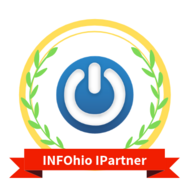RCT Spring 2022 Post 3: Definition
by Emily Rozmus 2 years, 8 months ago- Using the links listed under What is the Definition of High-Quality? Write your own definition of high-quality instructional materials.
Please post your answers below. Feel free to read your fellow RemotEDx Certified Trainers' posts and comment!

For me, when I think about the definition of high-quality, I think about resources that are backed by research and have been vetted by neutral reviewers. I also think that high-quality resources need to be flexible in their usage so that they can be used synchronously or asynchronously, face-to-face, or virtual, as well as flexible within the RTI process to support differentiation. Lastly, when I think of high-quality instructional material, I think of material that is user-friendly. If teachers and other support staff cannot use the basic functions of the tool then it doesn't matter how great it is, it will not get used. Having a tool that is user-friendly is so important and virtal to any resources being used with fidelity.
Great definition! I think you have captured the main criteria for sure!
For me, high quality is research backed resources that are adaptable to use face to face or online, and have clear linkage to the standards and broader learning goals that link to CCR standards.
For me, High-Quality means that it meets the following criteria:
I agree with all 4 of these and might even add - variable format to better meet specific needs
I also agree with all 4 of the posts. High quality instruction must be backed with research, aligned with Ohio standards, engaging for students, leveled or differentiated, able to be used synchronously or asynchronously, and easy to use for both teachers and students.
When I think of high-quality instructional materials, they have been throughly vetted to ensure that they are aligned to standards and accurate. They need to be engaging, accessible, and differentiated. There should be an assessment piece that allows both formative and summative assessment of the content.
High quality instructional materials should be aligned to the standards, research based, accessible to all learners, and provide varying levels of depth of knowledge as appropriate. When considering online materials, resources should include strategies that have a positive impact on student learning and not focus on using tech just because it is available. Technology should be used when it enhances the strategies used in the high quality materials. Consideration must also be given to ensuring materials can be used across multiple instructional deliveries, like face-to-face, blended, or remote instruction.
High Quality resources:
High Quality means engaging, aligned to standards, accessible, and diverse. It means this content can be used in more than one way and in more than one setting.
Speaking as an educational consultant, the number one attribute for any high-quality instructional materials is alignment to the standards. In the field, we see A LOT of educators that simply do not know their standards and how the selected curriculum resource does AND does not support standards mastery (curriculum literacy). Following alignment, flexibility is key whether it be related to method of delivery (in-person vs. hybrid vs. remote), differentiated DOK levels, or engagement.
Hi quality instructional materials are those that align to the appropriate standards, are research based, and have depth as they are utilized. I also believe that high quality instructional materials should be designed in a way that can support synchronous and asynchronous learning as we continue to transition to more blended and hybrid learning modes.